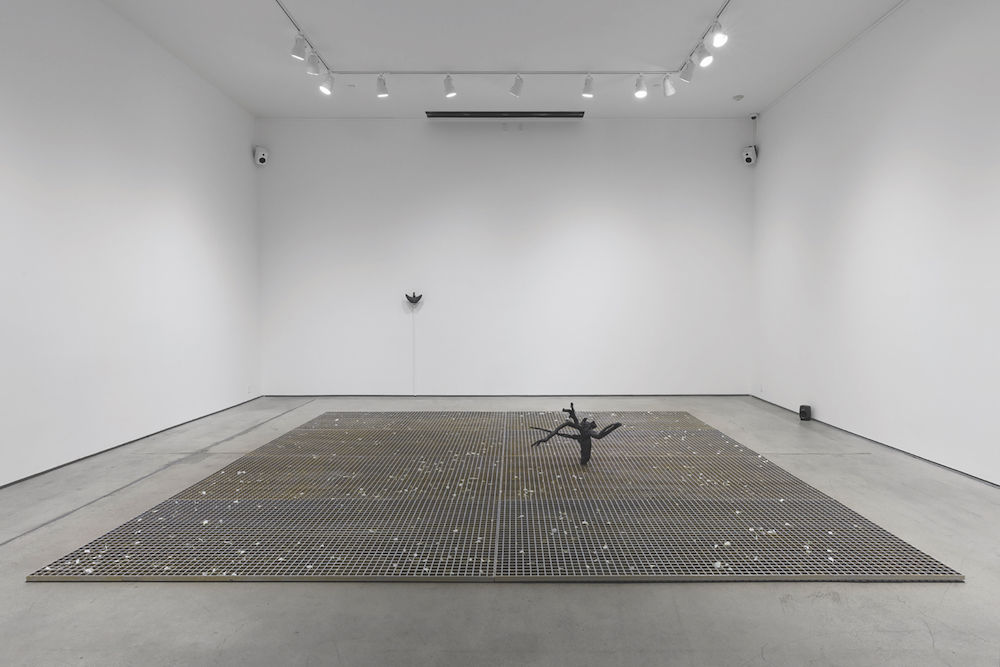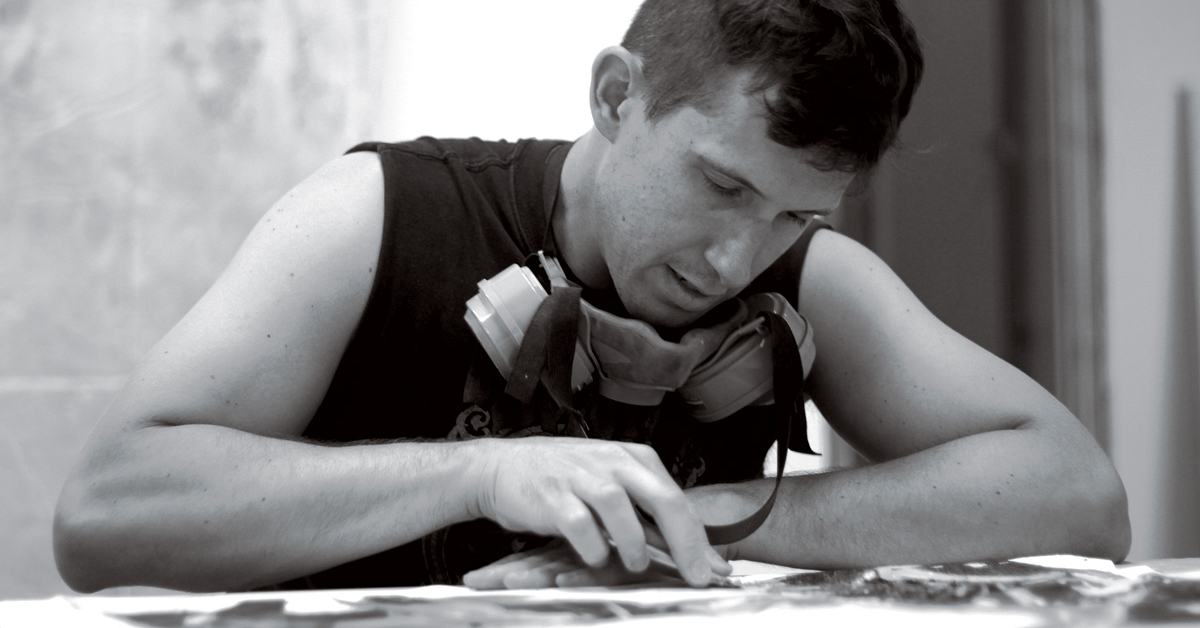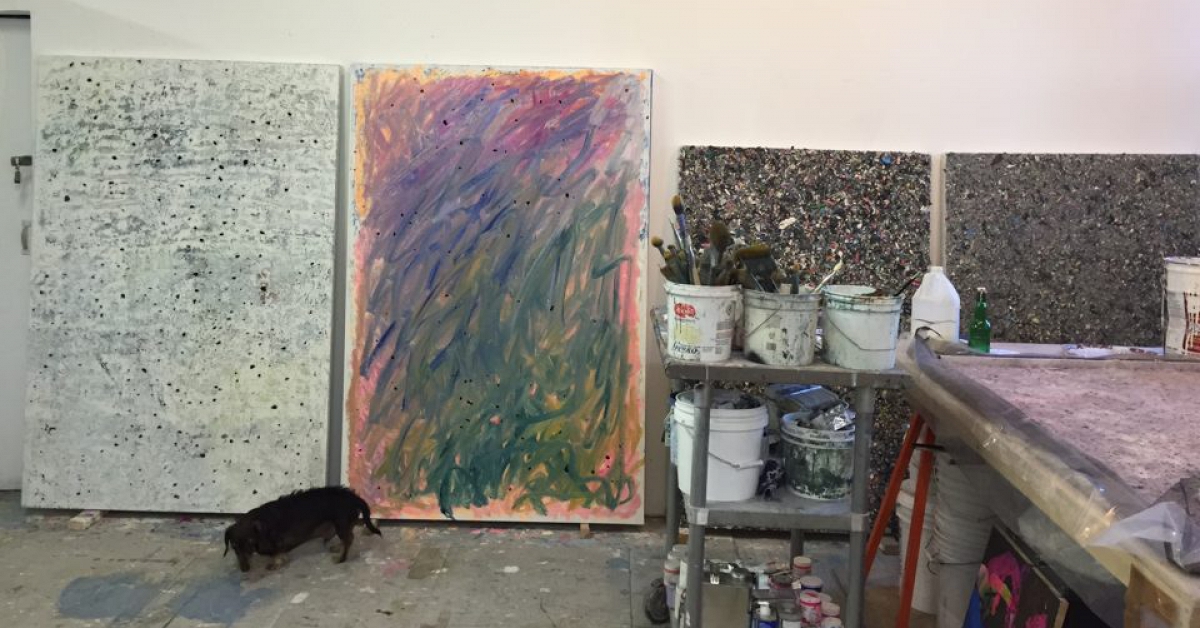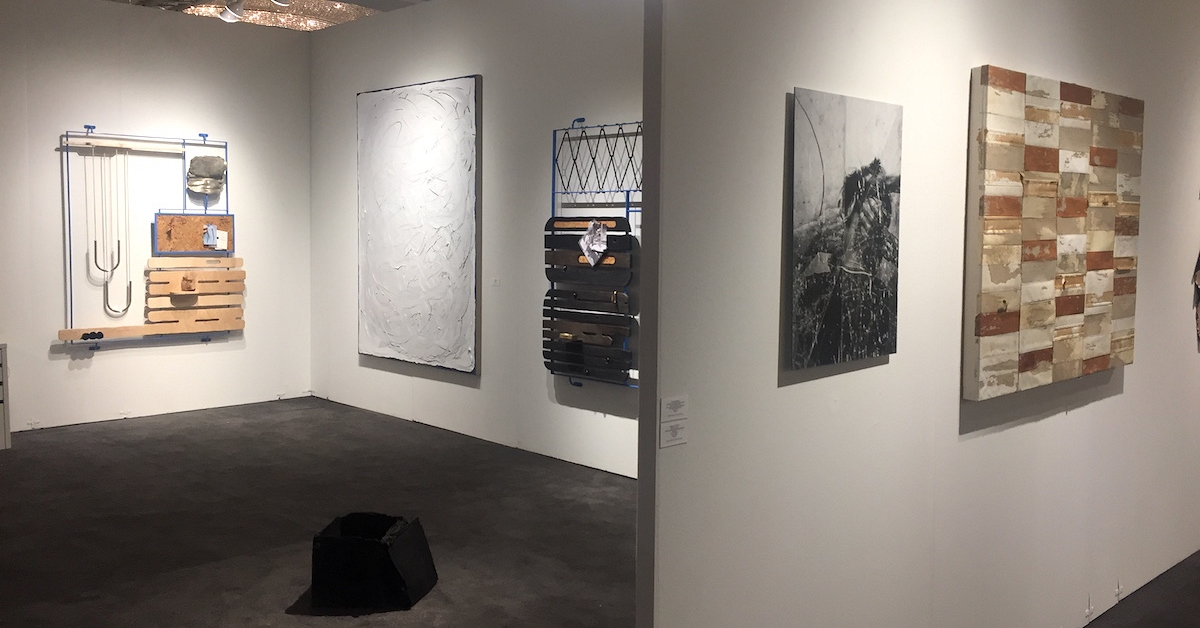Erasure and Persistence
Art in America / Jan 5, 2021 / by Leah Ollman / Go to Original

Harold Mendez’s texturally lush, emotionally simmering show at ICA LA takes its title from the first line of a poem by Juan Felipe Herrera: “Let us gather in a flourishing way.” Following this gentle, affirming invitation, Herrera’s poem oscillates seamlessly between English and Spanish, exemplifying the accretive construction of a single, continuous voice. Mendez’s practice centers on just such a forging of identity from disparate languages and discrete histories. Born in Chicago in 1977 to parents from Colombia and Mexico, Mendez is now based in Los Angeles, where he works across mediums, integrating the found and the made through eloquent acts of assemblage, amendment, and alteration.
The years now (2020), an installation in its own dedicated gallery, is the first piece visitors to the exhibition encounter, and also the most recent. Mendez laid down a broad floor of shallow, gridded fiberglass panels that resemble metal stained faintly with rust. A light sprinkling of white carnation petals softens the geometric substrate, from which emerges a sole, stunted tree section, burnished silvery-black with graphite and charcoal. The knee-high form, with its knotted trunk and gnarled, leafless branches, feels equally arboreal and corporeal, suggesting a twisted body or a heart extracted from a chest. Its animate energy contrasts vividly with the static, standardized industrial panels, stretching in every direction like an indeterminate map. Speakers positioned throughout the room emit a scratchy, looping, spoken-word montage, more ambience than discernible message, except for a few clearly audible phrases (“who am I?,” “upside down,” “first breath”), which reinforce the standing hunk of wood’s assertion of presence in a sea of anonymity, its implication of personhood declared, identity positioned.
Power, violence, and loss recur as unstable forces in Mendez’s work, countered by the inspiriting persistence of beauty and the organic. A muted palette of ash, dust, and soot prevails in all nineteen works here (variously dated 2012–20), a palette of distillation and temporal remove, as the artist methodically translates colors to a gray scale. Nowhere is this narrow tonal range more evocative than in a half-dozen pieces sourced from photographs. Mendez altered the surface texture, emphasis, and legibility of these images by using a variety of processes and materials, including transfer and abrasion, toner, graphite, watercolor, lithography crayon, and actual soot. Several of the larger pieces, especially, read as spectral hybrids, at once photograph, negative, print, and drawing. It is impossible to tell where the product of the lens stops and the work of the hand begins.
In Sin Nombre (Nameless, 2018), Mendez transformed the specificity of a nineteenth-century Cuban archival photograph of a man astride a horse into a stirring emblem of historical erasure, through the reversal of values and the wearing down of the document’s details. The matte, velvety depiction of a spiderweb in At night we walk in circles (2016) quotes from nature as well as, perhaps, Vija Celmins’s prints and drawings with a similar motif. The web’s filaments hang heavy with droplets, like drooping strands of dark pearls. Borders of foliage anchor the ephemeral sight, and what appear to be cracks in the emulsion of the originating image impose a second web, jagged and angular, upon the first, setting off a conceptual vibration between record and recording process. The literality of photographic description is just a starting point; from there, Mendez adds and subtracts to enact a tight reciprocity between image and surface, found and made. Broader social histories and art histories come into play (Mendez has referred in his titles to the Czech photographer Josef Koudelka, the Colombian Melitón Rodríguez, and others), and internal, emotional currents find external form. If the show has an elegiac quality, it conveys just as quietly and insistently, through Mendez’s resonant assimilation of materials and memory, a heartening sense of individual agency.






